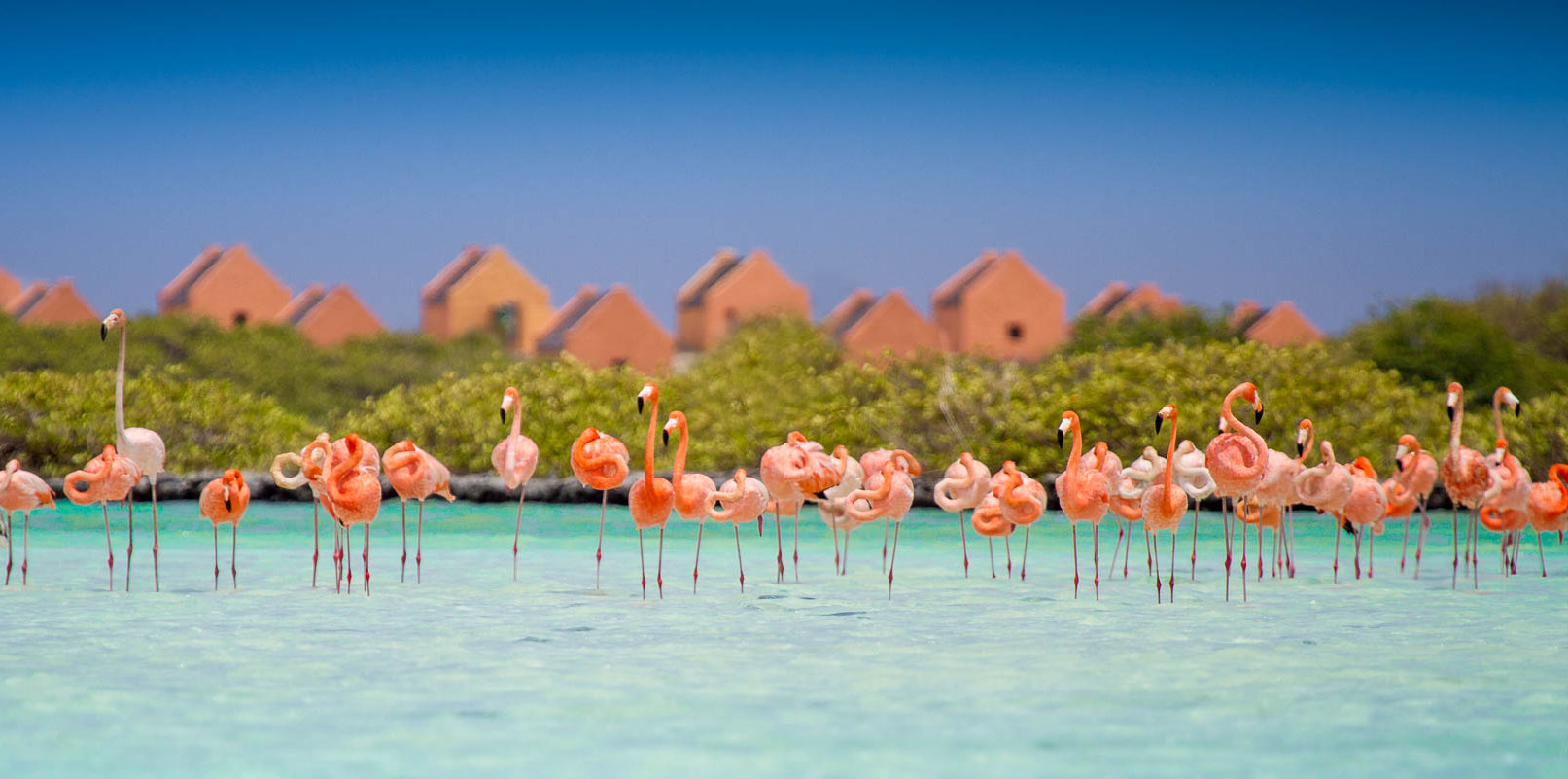Belmar Oceanfront ApartmentsABOUT BONAIRE
The island is located in the southern Caribbean, outside the hurricane belt close to Aruba and Curaçao, which are only respectively 86 and 30 miles (138 and 44 kilometers) away. Bonaire is just a 3-hour flight from Miami and approximately a 10-hour flight from Europe.
Consistently rated as the top dive destination in the world and as a pioneer in preserving nature, Bonaire is a dream for every diver. Over 80 dive sites, many of which are easily accessible by shore, truly make Bonaire the shore diving capital of the world. However, this boomerang-shaped island, 24 miles (39 kilometers) long by 3-5 miles (5-8 kilometers) wide, also offers a variety of activities for those who do not dive.
The eastern mangroves, the “nursery of the reef”, is best discovered by kayak, while on the western part of the island, several caves are open for guided tours to explore this unknown and mystical side of Bonaire. Lac Bay in the south has near-perfect windsurfing conditions, making the area ideal for beginners and advanced windsurfers alike, whereas the hilly landscape in the north is every mountain biker’s dream. Klein Bonaire, a small deserted island a mile off Bonaire’s coast, is well known for its turtle-hatching area and beaches.
The clear waters are ideal for snorkeling and sunbathing. Diving, kayaking, caving, snorkeling, mountain biking, wind- or kitesurfing, bird watching, hiking, or just relaxing and re-energizing from the real world’s stress: you name it and you will find it on Bonaire.
Constant trade winds from the east ensure a pleasant breeze over the 113.5 square mile (294 square kilometers) island. Although influenced by a dry climate, Bonaire has three distinctive land types. The central region is semi-arid, while the southern region is flat and wide open with a unique mangrove system and salt pans. The northern part is greener and hillier. With a height of 714 feet (218 meters), Brandaris is Bonaire’s highest point. Average annual rainfall of 22 inches (56 cm), an almost constant water temperature of 80 degrees Fahrenheit (27 degrees Celsius), and a slightly higher air temperature of 82 degrees Fahrenheit (28 degrees Celsius), makes Bonaire a pleasant environment in which to vacation.

Bonaire Culture
Bonaire’s population is a rich mixture of several cultures and dates back to around 1000 AD, the era of the Arawak Indians, when the Caiquetios sailed across from what is now Venezuela. Traces of their culture can still be found on various archaeological sites. Slaves were brought from Africa in the early 1600s. Historical landmarks from this dark period in history are still visible on the island. Most eye-catching and impressive are, of course, the slave huts on the southern tip of the island. Although defined by diversity, Bonaire’s rich culture is heavily influenced by African elements. Songs and dances of the slaves, created to deal with their inhumane treatment, are kept alive by the people of Bonaire. African styles have been creatively mixed with the cultural influences of the island’s occupants, such as the Spaniards and the Dutch. Friendly and warm are the best ways to describe the people behind the bright smiles for which Bonaireans are so famous.
While Dutch and Papiamentu are the official languages, English is widely spoken by most people on the island. Renting a car is highly recommended as there is no formal public transportation system on the island. Taxis are available at the airport or can be arranged by your hotel.
On Bonaire’s main street, Kaya Grandi, you won’t find busy and overcrowded shops retailing the traditional gadgets and souvenirs you encounter when visiting other main Caribbean tourist destinations. The selection of goods offered are like Bonaire itself: diverse and surprising. We have some shops that offer high-quality jewelry while others carry arts and crafts from our local artisans.
For many years, Bonaire’s government has played a leading role in preserving and protecting nature on the island, both below and above the water. Most significant and well-known, of course, is the Bonaire National Marine Park, initiated over 30 years ago at a time when marine parks were unknown.

